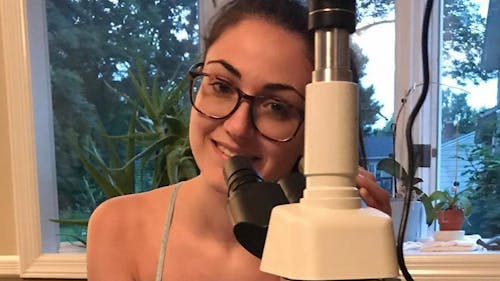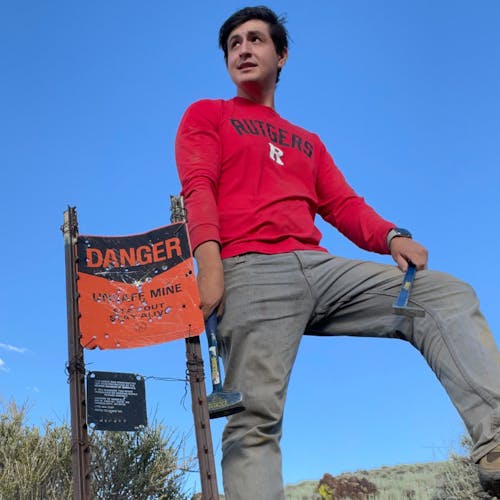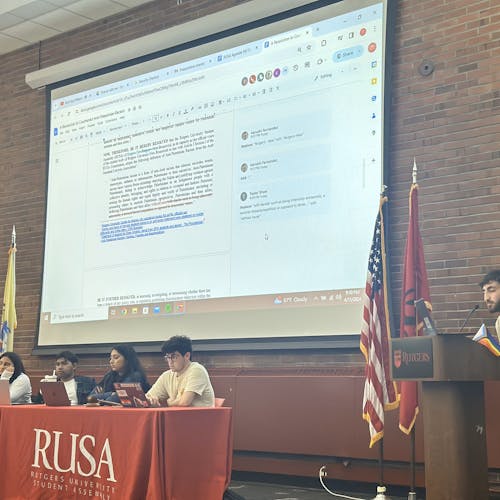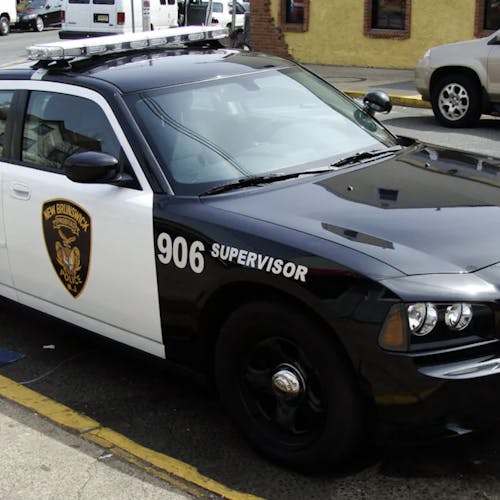Rutgers student's viral Instagram page combines microbiology with art

Julia Van Etten, a graduate student in the Department of Ecology, Evolution and Natural Resources, has always been interested in the unusual.
Van Etten has recently gone viral due to her Instagram page, @couch_microscopy, which shows close-up photographs of different microorganisms found in bodies of water. The account has garnered more than 18,000 followers within a year and a half.
“I was just taking some photos, and thought they were pretty cool ... I don’t know, I just made it one day,” she said. “I didn’t think anyone was going to follow me other than my friends, and then people just started following me. It was insane.”
She started the Instagram page out of boredom when she was stuck at home and recovering from Lyme disease. Though she majored in marine biology, Van Etten has always been artistic, so she spent her time painting at home before moving on to something else.
Inspired by her marine biology classes in college, in which she would collect different types of plankton for observation under a microscope, Van Etten decided to purchase a microscope to use in her home. She then collected water samples from ponds, puddles and lakes around her neighborhood. She took the samples to her couch to view and photograph them.
Van Etten’s Instagram page attracted people from all over the world. Her followers are divided among artists, students and people from miscellaneous backgrounds who happened to stumble upon her page.
She said the page started as a personal art project, which was a concept she tried to maintain despite the fact that her photos now have a substantial audience.
“I try to keep doing what I’m doing based on what’s in my head,” she said.
The only change to her content was her captions. Her first photographs only included the name of the microorganism and the magnification she used. After receiving messages from people asking for more about the microorganisms, she started spending more time giving scientific context to the samples she was photographing.
Her account has also been a personal learning opportunity. For instance, while she knew how to identify saltwater plankton, she was unfamiliar with the freshwater microorganisms found in ponds and lakes. She said she found a community where she could ask questions and learn more about microbiology by joining a Facebook page with other people who observed water samples as a hobby.
Van Etten not only learned about other scientific microorganisms, but also about the intersection between art and science. She said she did not intentionally mean to receive such a large reception for her Instagram, but realized that an important way to communicate science was by making it artistic.
“People in the general public relate to art and to aesthetically pleasing things. I personally would rather look at a pretty picture and learn about it rather than read a paper,” she said.
The project has now extended to Rutgers, where Van Etten is bringing her microscope and artistic skills to observe algae and protists at Passion Puddle on the Cook and Douglass campuses. She is currently working with Debashish Bhattacharya, a professor in the Department of Biochemistry and Microbiology, who also runs the Genome Cooperative at the School of Environmental and Biological Sciences.
Bhattacharya said the Genome Cooperative works with scientists around the globe to study the genetic makeup of a variety of organisms, including fungi, plants, bacteria and algae. As part of the project, Van Etten will train undergraduate students in basic microscope skills so that they can also post images for a separate Instagram she has created specifically for the University.
“The Instagram page presents microbial diversity that provides the fodder for basic science aimed at determining what these species are, how they live and what sorts of genes they encode in their genomes to allow their lifestyle,” Bhattacharya said.
While Van Etten plans on continuing work on her Instagram page, she also hopes to do outreach in the future.
“This can be done by anyone. It can be a hobby, you could know nothing about it, pick it up as a fun thing and contribute to science,” she said.



